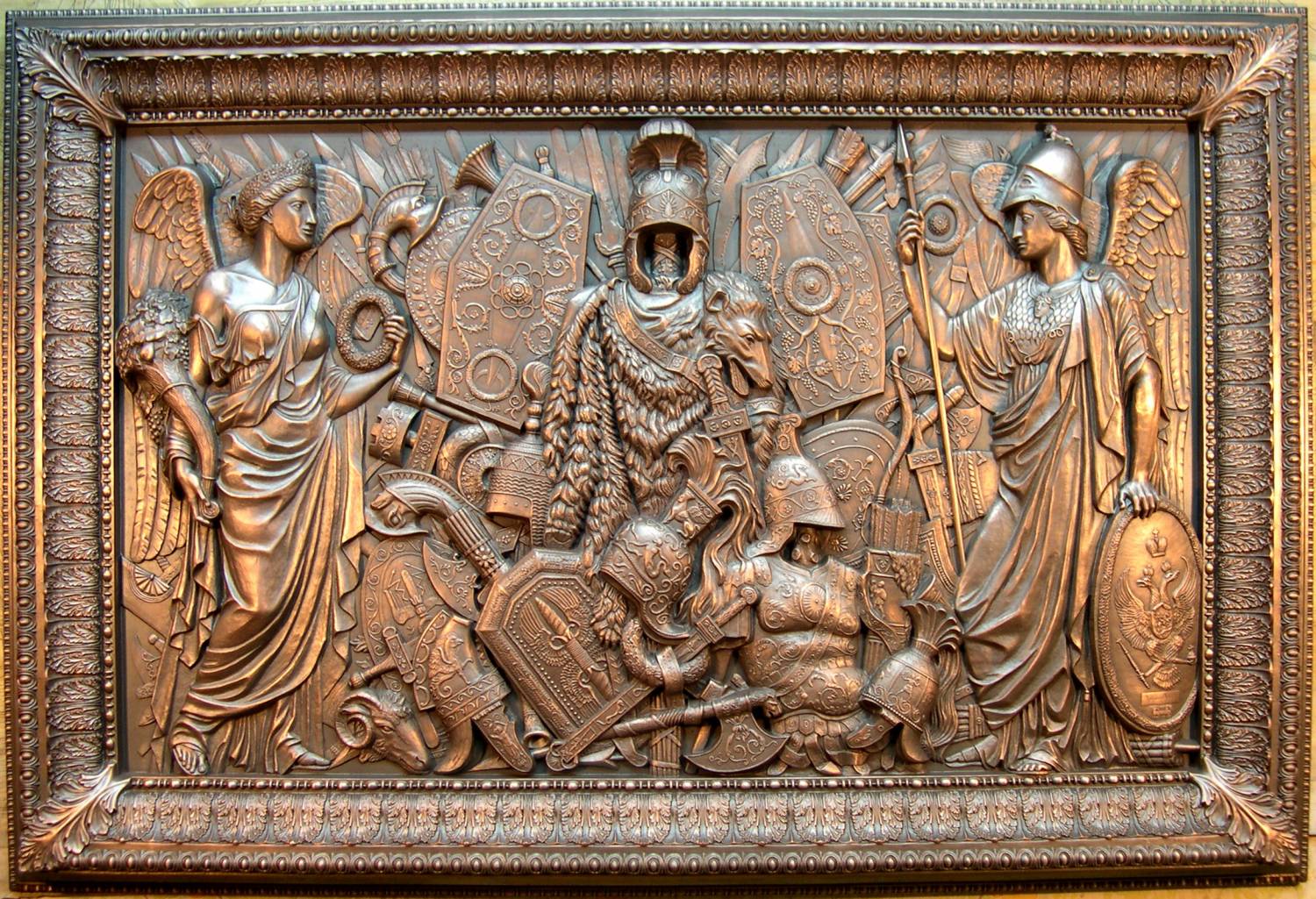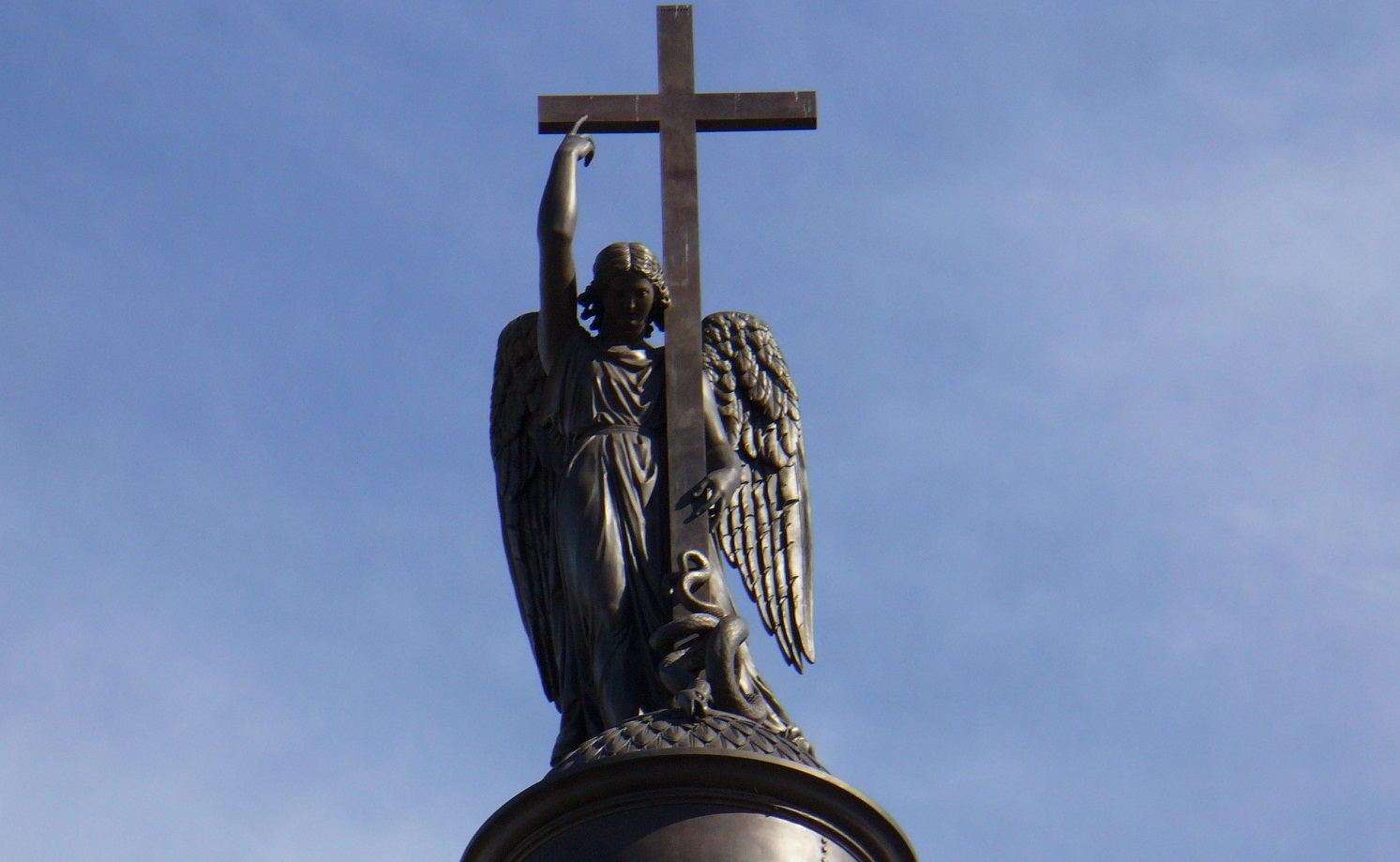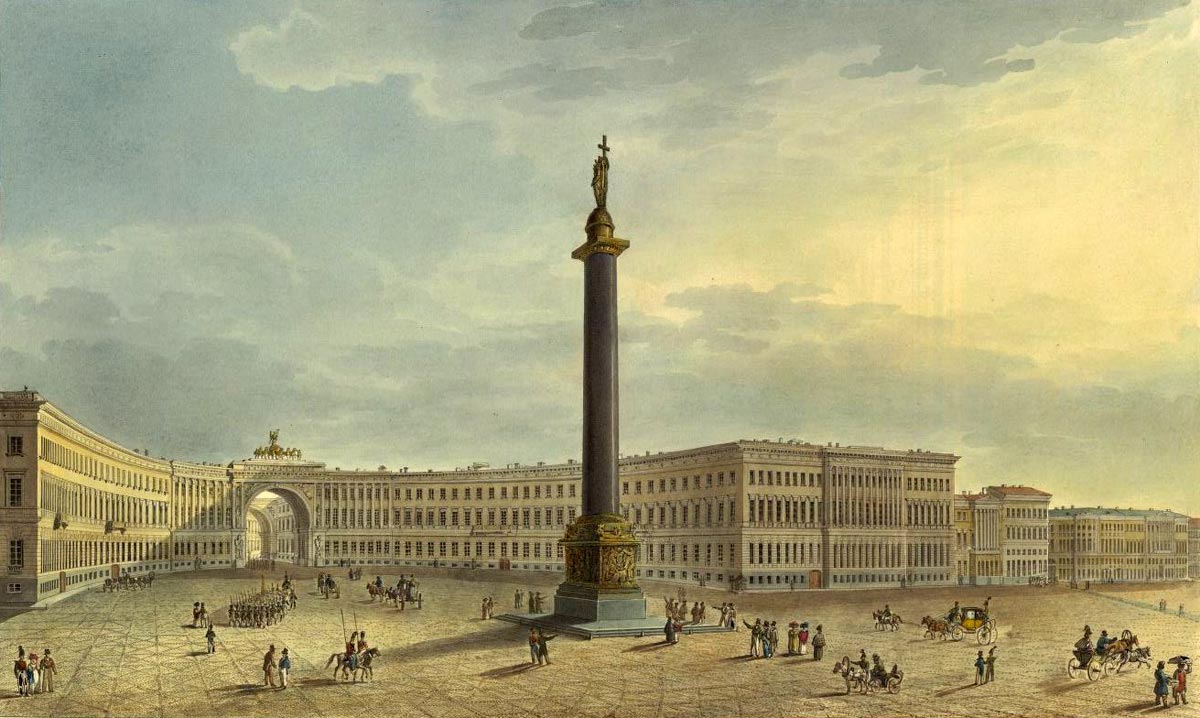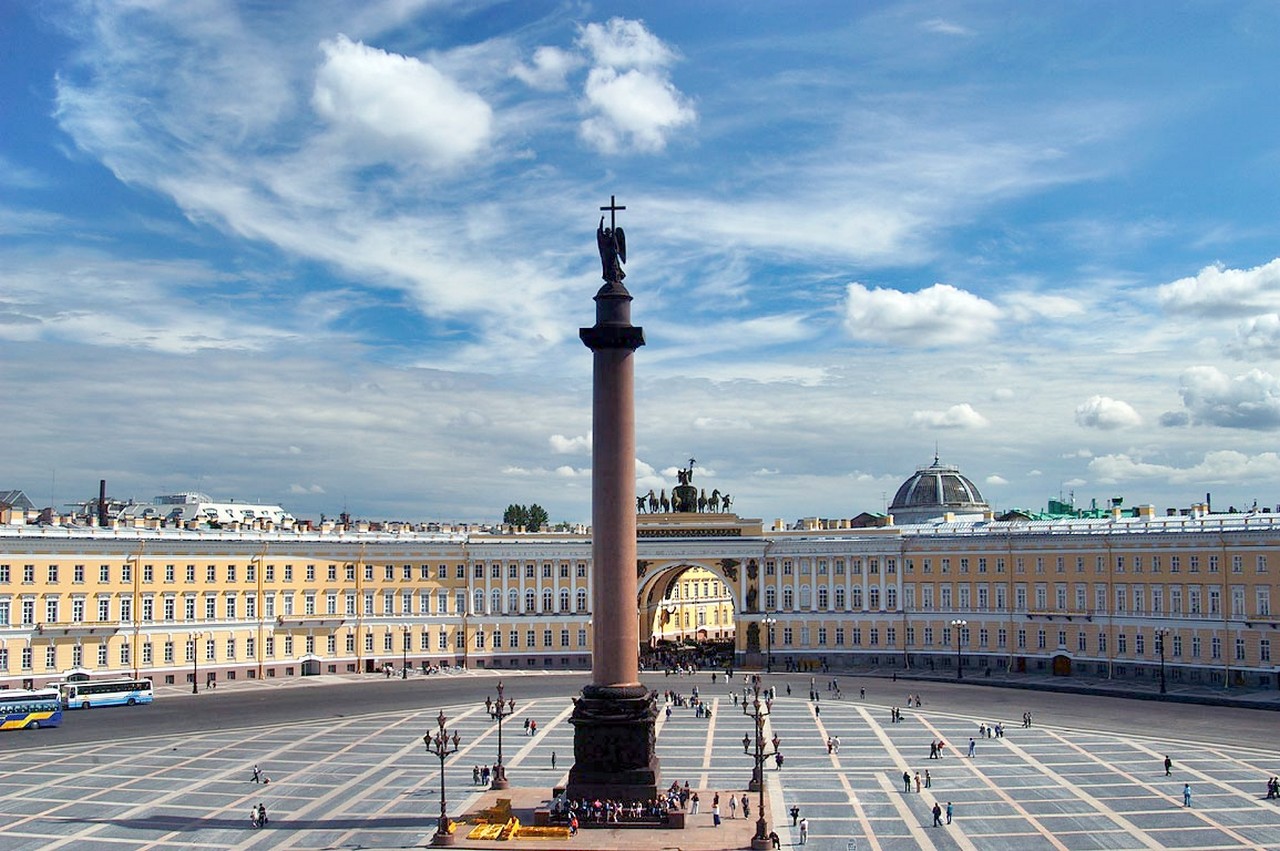The Alexander Column (Russian: Алекса́ндровская коло́нна, Aleksandrovskaya kolonna) also known asAlexandrian Column (Russian: Александри́йская коло́нна, Aleksandriyskaya kolonna), is the focal point ofPalace Square in Saint Petersburg, Russia. The monument was erected after the Russian victory in the warwith Napoleon's France. The column is named for Emperor Alexander I of Russia, who reigned from 1801–25.
The Alexander Column was designed by the French-born architect Auguste de Montferrand, built between 1830 and 1834 with Swiss-born architect Antonio Adamini, and unveiled on 30 August 1834 (St. Alexander of Constantinople's Day). The monument is claimed to be the tallest of its kind in the world at 47.5 m (155 ft 8 in) tall and is topped with a statue of an angelholding a cross, as a triumphal column it may be the highest but the Monument to the Great Fire of London is a freestanding column 62m high. As a monolith that has been quarried, moved and erected it is the heaviest recorded. The statue of the angel was designed by the Russian sculptor Boris Orlovsky. The face of the angel bears great similarity to the face of Emperor Alexander I.
The top of the column, showing statue of an angel holding a cross
The column is a single piece of red granite, 25.45 m (83 ft 6 in) long and about 3.5 m (11 ft 5 in) in diameter. The granite monolith was obtained from Virolahti, Finland and in 1832 transported by sea to Saint Petersburg, on a barge specially designed for this purpose, where it underwent further working. Without the aid of modern cranes and engineering machines, the column, weighing 600 tonnes (661 tons). On 30 August 1832 it was erected by 3,000 men under the guidance of William Handyside in less than 2 hours. It is set so neatly that no attachment to the base is needed and it is fixed in position by its own weight alone.The pedestal of the Alexander Column is decorated with symbols of military glory, sculpted by Giovanni Battista Scotti.
On the side of the pedestal facing the Winter Palace is a bas-relief depicting winged figures holding up a plaque bearing the words "To Alexander I from a grateful Russia". The composition includes figures representing the Neman and Vistula rivers that were associated with the events of the Patriotic War. Flanking these figures are depictions of old Russian armour - the shield of Prince Oleg of Novgorod, the helmet of Alexander Nevsky, the breastplate of Emperor Alexander I, the chainmail of Yermak Timofeyevich and other pieces recalling heroes whose martial feats brought glory to Russia.
The other three sides are decorated with bas-reliefs featuring allegorical figures of Wisdom and Abundance, Justice and Mercy, Peace and Victory, the last holding a shield bearing the dates 1812, 1813 and 1814. These compositions are enhanced by depictions of Ancient Roman military symbols and Russian armour.
The sketches for the bas-reliefs were produced by Auguste de Montferrand. He coordinated the scale of their compositions with the monumental forms of the monument. The panels were designed to the planned size by the artist Giovanni Battista Scotti. The models were produced by the sculptors Piotr Svintsov and Ivan Lepee, the ornamental embellishments by sculptor Yevgeny Balin. The casting of the bronze was done at Charles Baird's works in Saint Petersburg.
A commemorative silver rouble designed by N. Gube was struck in 1834 and it is rumoured that a chest of these coins was placed in the foundations.













